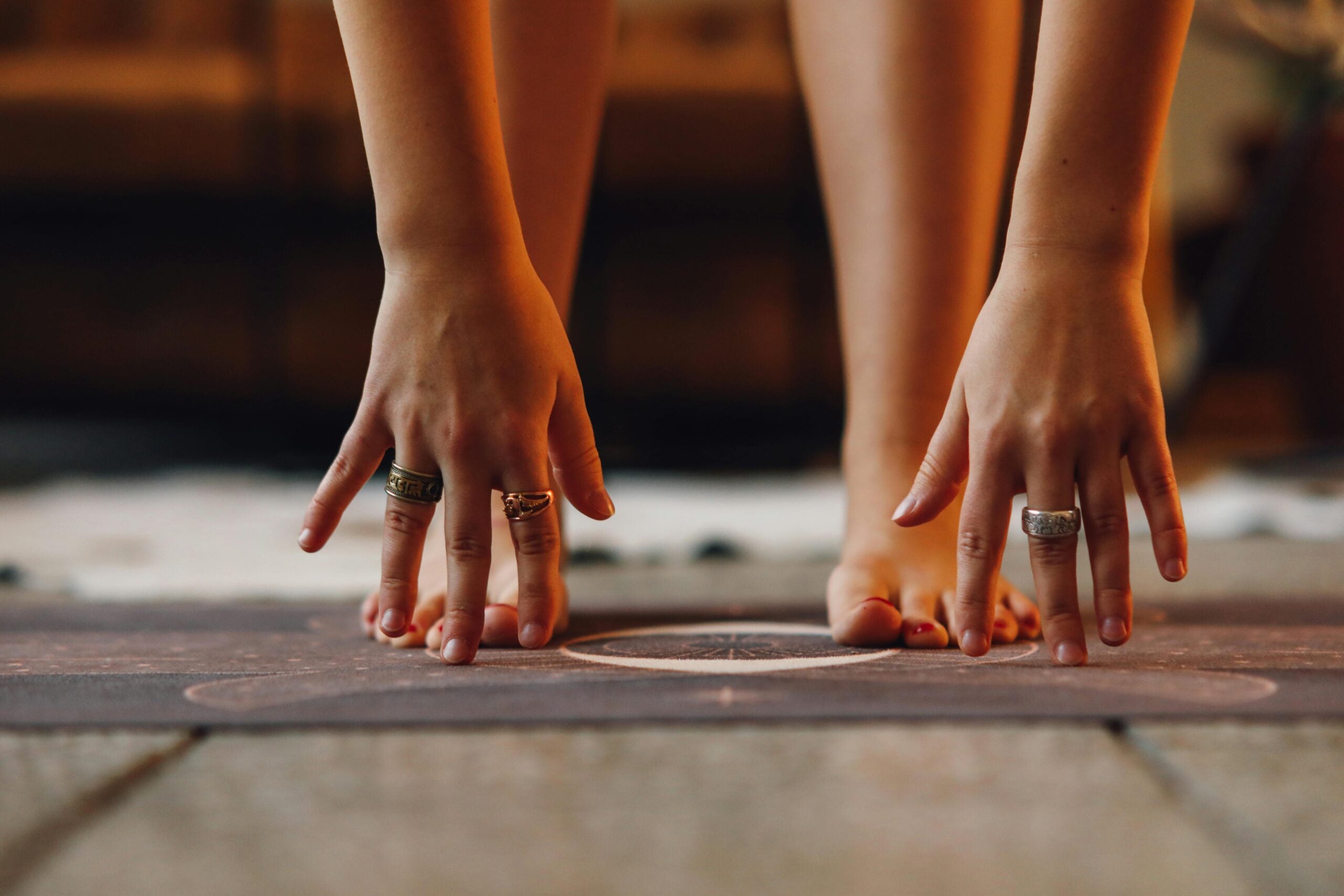Forward Folds Become Waaaaay Comfortable When You Use This Unexpected Prop

(Photo: KoolShooters | Pexels)
You didn’t hear this from me, but there are some poses yoga teachers secretly dislike. I can’t speak for anyone else, but sometimes they’re the ones I tell my class to do but don’t demonstrate myself. Like forward folds. These allegedly relaxing poses feel intense in my body as I confront tightness in my lower back.
I also find it almost impossible to quiet my thoughts in any forward fold. When I’m practicing at home, I’ll be in the middle of Standing Forward Bend (Uttanasana) and suddenly remember something, anything that doesn’t have to do with forward folding, and pop right out of the pose to go do that thing.
And I’m not the only one. The back is a common site of tension, whether that’s due to prolonged sitting, standing, or stressing. Even working toward better posture or practicing a lot of backbends in yoga can cause tightness in the erector spinae group, the long muscles that run along the spine to help stabilize and extend it. The mental resistance can be as challenging as the physical for those of us whose minds won’t settle during these poses.
Turns out there’s a happy medium between feeling overwhelmed in a forward fold and altogether ditching it. Although you may have heard teachers offer ways to decrease the intensity of a pose, sometimes slight adjustments don’t feel like enough. That’s where a prop can come in handy to help you dread these poses less and ensure you don’t deprive yourself of their benefits.
3 Less Intense Forward Fold Variations
You can practice any of these poses on their own anytime you need during the day, at night, even before or after yoga class. You’ll need a chair, which acts as a source of support so you can stretch your spine, and a blanket or two to cushion your lower back when you sit.
Explore staying in each pose for 30 seconds to one minute. If you feel resistance, see if you can identify what’s causing it. Is it your mind badgering you about your to-do list? Gently bring it back to the experience at hand. Chances are, whatever else you have to do can wait another minute or two. If the resistance is in your body, where is it exactly? In your legs? Your lower back? Imagine your breath moving into any tight spots, softening the tension. Is your breath feeling constricted? Allow it to deepen so that your body lifts as you inhale and lowers as you inhale, giving your forward fold a softness and malleability.

1. Puppy Pose Variation With Hands on Chair
Experience the benefits of stretching your back without the feeling of hunching over. Think of it as gentle traction for your spine.
How to:
- Stand facing a chair and place your hands on the back of the chair (a countertop or desk could also work). Walk your feet back until your arms are straight and your spine is nearly parallel to the floor in a version of Puppy Pose (Uttana Shishosana).
- Step your feet about hip-distance apart or wider. Imagine the backs of your thighs are reaching toward the wall behind you. Lower your gaze toward the floor while keeping your head in line with your neck and back.
- Stay here or increase the stretch in the lower back by bending both knees at once or one at a time. If it’s comfortable, wag your hips from side to side. Take several breaths.
- To come out, walk your feet toward the chair as you stand straight and slowly lift your head. Pause here for a few breaths.

2. Pyramid Pose With Hands on Chair
The intensity of Pyramid Pose (Parsvottanasana) is real—but this version takes it down a notch. The chair supports your upper body weight, giving you more control over the stretch in your hamstrings and lower back.
How to:
- Stand about a foot in front of the chair. Step one foot closer to the chair. Turn your back foot out slightly.
- Hinging from your hips, lower your chest and bring both hands to the outer edges of the chairseat so your wrists are below your shoulders. Bend your front knee or keep it straight. Imagine the backs of your thighs reaching toward the wall behind you.
- Press your hands into the seat and reach your chest forward. Lower your gaze toward the floor and keep your head in line with your neck and back. If it’s comfortable, lower your forearms to the chairseat. Stay here or rest your forehead on your forearms or the seat. Take several breaths.
- Press your hands into the chair and step your back foot forward and your front foot back to switch sides. Take several breaths here.
- To come out, lift your chest and slowly stand upright.

3. Wide-Legged Forward Fold With Forehead to Chair
Tension in the back and hamstrings can make lowering the forehead toward the floor in Wide-Legged Forward Fold (Upavistha Konasana) or Seated Wide-Legged Forward Fold (Prasarita Parsvottanasana) uncomfortable. In this variation, the chair provides a closer destination.
How to:
- Sit on the floor or a blanket facing the chair so your hips are about one foot away from it. (You can place another folded blanket on the chairseat.)
- Separate your legs into a V shape so both feet are outside the chair. Face your toes toward the ceiling. Hinging forward from your hips, reach your chest forward toward the chair and place your arms on the chairseat, reaching your hands toward the back of the seat. Stay here or rest your forehead on the chairseat. Or cross your forearms on the chairseat and rest your forehead on top of them. Adjust your distance from the chair as needed.
- To come out of it, sit up, bend your knees and draw them together, and shake your legs out.